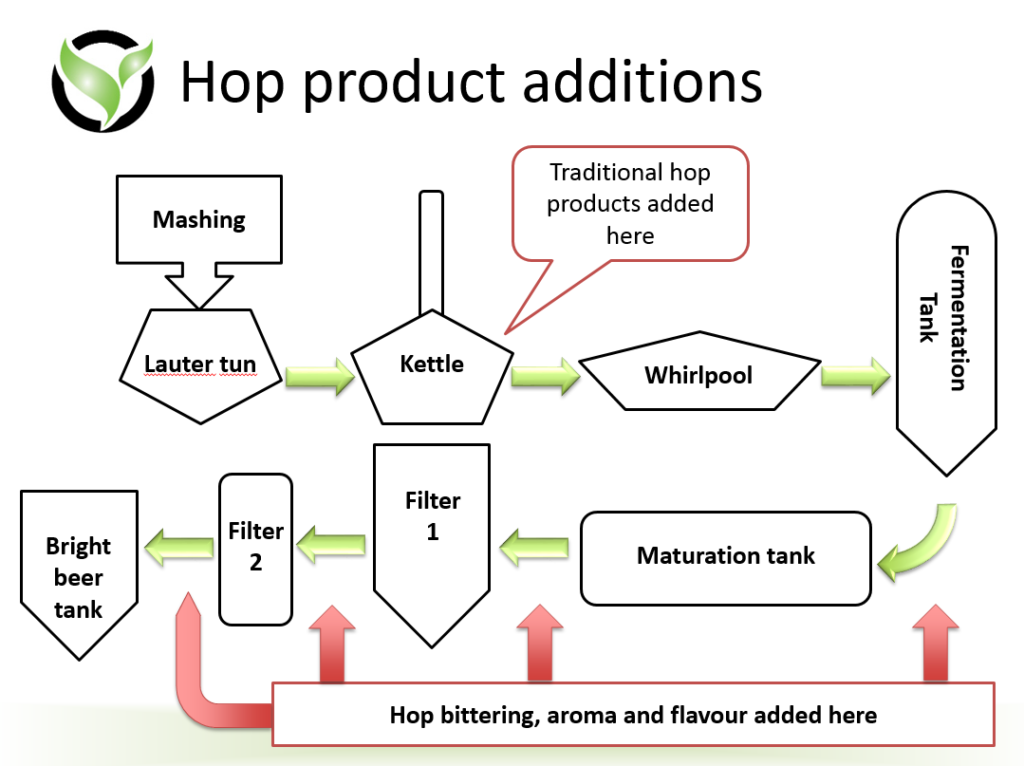Cullercoats Brewery in Tyne and Wear are even conducting a dry hop project using British Hops. Even the big guys are in on the dry hopping act, with hoppier developments now on offer from Mahou, Carlsberg, ABI and SAB.
So in short dry hopping is now an established, essential step for most brewers, delivering complex hop aroma and flavour to their beer.
Although relatively simple to carry out, it has many associated issues, especially beer losses, long vessel occupancy times and most importantly inconsistency. For the public, willing to shell out their hard earned cash for the favourite pint (or schooner) reproducibility within the brand is vital.
This brings us to discuss beer flavour and aroma, which is complex, and relatively poorly understood when compared to the alpha chemistry that’s dominated the hop industry for most of the last century. These dry hop aromas are variable and the interactions often unpredictable, and easily lost.
Many hop compounds interact, some synergistically, others masking specific flavours. Contributions from polyphenols and beta-glycosides are realised by using hop cones or pellets.
Low beer pH (usually 4.2-4.5 units) can hydrolyse linalool and geraniol and release these into the beer giving greater flavour contributions.
Perceived bitterness changes can also be noted, but these aren’t coming from the addition of any alpha acids as these are insoluble, and the cool temperatures used for dry hopping (60-70oF) don’t cause any isomerisation.
More likely the complex flavour interactions of hop oils in the beer flavour matrix, or from compounds extracted from the beta acids (humulinones) in the cold extraction alter the harshness of the bitterness.
Hop polyphenols, which can also be extracted cold side can act synergistically with the bittering compounds present, further altering the perceived bitterness of the beer.
Hence the use of hop cones or pellets imparts a complex, rich flavour and aroma to the end beer but can a Hop Product offer the same complexity?
Given the current hop shortage now is perhaps a good time to address this question and consider using hop products for dry hopping?
After all, hop pellets are strictly speaking already a hop product so why should hop oils be such an emotional hurdle to cross?
A hop oil product is made from the hop cones or pellets with the essential oils usually distilled off. These are then further processed to solubilse the oil and standardise its main components.
Many brewers are currently using hop products for dry and late hop additions, such as the HopBurst TM or HopSensation products from Totally Natural Solutions, Kalsecs Hop Rival, or the PHA Topnotes from Barth.

